Researchers have recently discovered a new way of making consumer items. They’ve developed a machine based on AI…
Why Ukraine Isn’t Deploying Abrams on the Battlefield? The Reason is Simple, Experts Say – Technology Org
The absence of Abrams tanks on the front lines in Ukraine has raised questions about the strategic use…
Game Informer’s Top Scoring Reviews Of 2023

Introduction
It’s no secret that 2023 is off to a raucous start with multiple high-scoring games hitting within the first few months of the year. This list will be your guide to every gaming experience Game Informer considers a must-play in 2023, encompassing the best games you can play on platforms like PlayStation 5, Xbox Series X/S, Switch, and PC, among others.
Below you’ll find a list of the top-scoring games of 2023, beginning with the top scorer and going down. Any game that scores between a 10 and an 8.5 makes the cut. Each entry also features a small blurb and a link to the full review. We’ll update the list with eligible titles as the year progresses, so be sure to bookmark this page if you ever need recommendations on what to play next. Have fun!
9.75
9.5
9.25
9
8.75
8.5
For more of our top reviews from recent years, head to the links below.
How to Start a Social Network Website From Scratch – Technology Org
Online interactions are the backbone of the modern internet. So, naturally, social networking website development has become incredibly…
The Role of Artificial Intelligence in Credit Scoring – Technology Org
Credit scoring has been a fundamental part of the financial industry for decades. It is a process that…
The Legend of Zelda: Ocarina Of Time 25th Anniversary | All Things Nintendo

This week on All Things Nintendo, the episode is devoted to celebrating the anniversary of The Legend of Zelda: Ocarina of Time. Not only is it one of the most important and influential video games ever made, but it happens to be in both Brian and Kyle’s top two games of all time. It’s safe to say there is plenty of love for Ocarina of Time in this episode. We also briefly touch on the release of the game’s 3DS remake, as well as the anniversaries of The Legend of Zelda: A Link Between Worlds and Super Mario 3D World.
If you’d like to follow Brian on social media, you can do so on his Instagram/Threads @BrianPShea or Twitter @BrianPShea. You can follow Kyle on Twitter: @KyleMHilliard and BlueSky: @KyleHilliard.
[embedded content]
The All Things Nintendo podcast is a weekly show where we celebrate, discuss, and break down all the latest games, news, and announcements from the industry’s most recognizable name. Each week, Brian is joined by different guests to talk about what’s happening in the world of Nintendo. Along the way, they’ll share personal stories, uncover hidden gems in the eShop, and even look back on the classics we all grew up with. A new episode hits every Friday!
Be sure to subscribe to All Things Nintendo on your favorite podcast platform. The show is available on Apple Podcasts, Spotify, Google Podcasts, and YouTube.
00:00:00 – Introduction
00:01:36 – Super Mario 3D World/Zelda: A Link Between Worlds Anniversaries
00:06:01 – The Legend of Zelda: Ocarina of Time Retrospective
00:57:09 – Ocarina of Time 3D
01:07:11 – Closing Thoughts
01:09:29 – Programming Note
If you’d like to get in touch with the All Things Nintendo podcast, you can email AllThingsNintendo@GameInformer.com, messaging Brian on Instagram (@BrianPShea), or by joining the official Game Informer Discord server. You can do that by linking your Discord account to your Twitch account and subscribing to the Game Informer Twitch channel. From there, find the All Things Nintendo channel under “Community Spaces.”
For Game Informer’s other podcast, be sure to check out The Game Informer Show with hosts Alex Van Aken, Marcus Stewart, and Kyle Hilliard, which covers the weekly happenings of the video game industry!
Creature Feature – Capturing The Curious Story Of Palworld
Three words come to mind when looking at Palworld: Pokémon, absurdity, and ambition.
Since its official reveal in June 2021, Palworld has raised eyebrows with its vibrant, expansive world teeming with dozens of monsters ripe for catching but in greater fidelity than Pokémon’s recent entries. In addition to capturing them and harnessing their abilities in battle, you can also wield realistic firearms and other weapons to blast them apart or, more hilariously, arm your cuddly critters with some serious heat.
“Pokémon with guns” has become the shorthand description of Palworld, but the experience packs in survival mechanics, base-building, a central narrative, and other bells and whistles. With so many promises, some have deemed Palworld too good to be true, a sentiment its Tokyo-based developer Pocketpair finds puzzling.
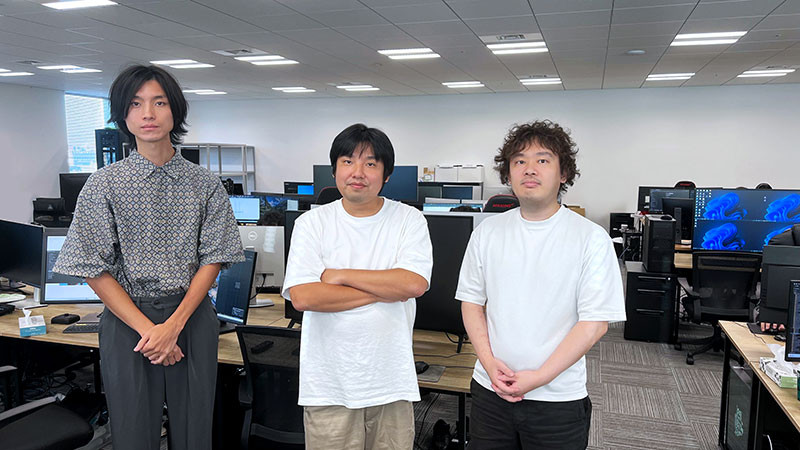
Chief Dev Hiroto Matsutani (right), Founder/CEO Takuro Mizobe (middle), Chief Artist Daiki Kizu (left)
“Palworld is not a ‘fake game,’” Pocketpair founder and CEO Takuro Mizobe tells me over email. “We are really surprised that some people say that.”
Palworld hits Steam Early Access in January, giving skeptical players a chance to see just how real the game is. But despite Pocketpair releasing numerous gameplay videos, an air of mystery still surrounds Palworld. How does its sizable feature list blend into a cohesive experience? Where did this wacky idea come from in the first place? Perhaps most importantly, just who the heck is Pocketpair?
The answer to the last question begins with Mizobe. A lifelong fan of video games, the NES ignited his childhood love for the medium before he graduated to the Super Nintendo. Mizobe says the turning point came when he discovered free games available through the internet in elementary school, which allowed him to sample a variety of genres easily. His broad palette is evident in his short list of all-time favorite games, which range from The Legend of Zelda: Ocarina of Time to Age of Empires to Serious Sam to Soldat, a free multiplayer action game. This exposure set him on the path of becoming an indie developer; he created his first game at 11 years old, which won awards at his school.
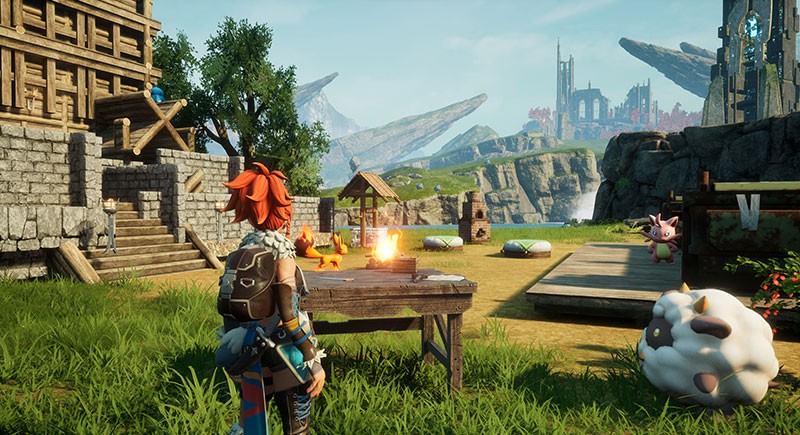
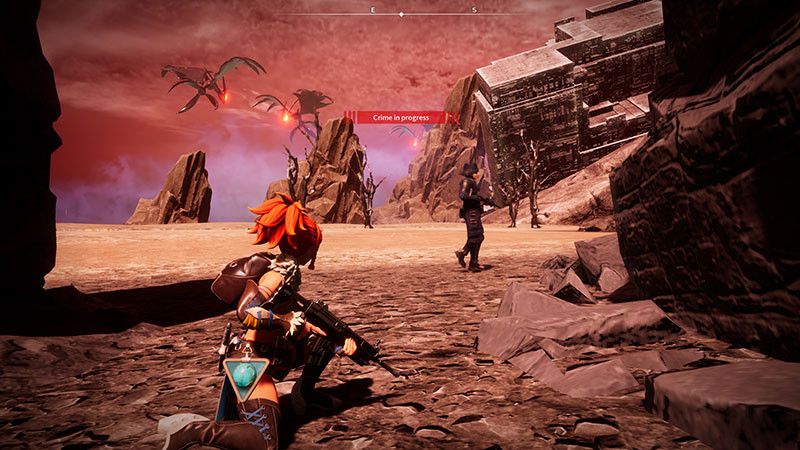
Fast-forward some years, and Mizobe, now a university student at the Tokyo Institute of Technology, got his first taste of professional game development by participating in the Nintendo Game Seminar. From 2005 to 2014 (with a break between ’11 and ’12), the yearly event invited Japanese game design students to learn the tricks of the trade and then work in teams to create an original title. The cream of the crop would then be released as free downloads on platforms like DS Download Play or the Wii U eShop. For the 2010 edition, Mizobe and his college friends created The Tentai Show, where players use black and white holes to absorb incoming meteors before they strike Earth. It was released as DSiWare in Japan in 2011.
In 2012, Mizobe graduated from university. He would spend a few years working “normal” jobs like JP Morgan Securities before founding Pocketpair in 2015. The team released its first title in 2019: Overdungeon, a real-time tower defense card battler that garnered a generally positive reception from players. For its second game, Pocketpair tackled something a bit more ambitious. Enter Craftopia, a game that feels like the precursor to Palworld. It, too, is a sprawling open-world survival game boasting features such as farming, crafting, dungeon crawling, base-building, pet breeding, and multiplayer. Craftopia has been playable in Steam Early Access since 2020, so it’s technically still in development. Despite this, Pocketpair is tackling perhaps its most ambitious title yet in Palworld.
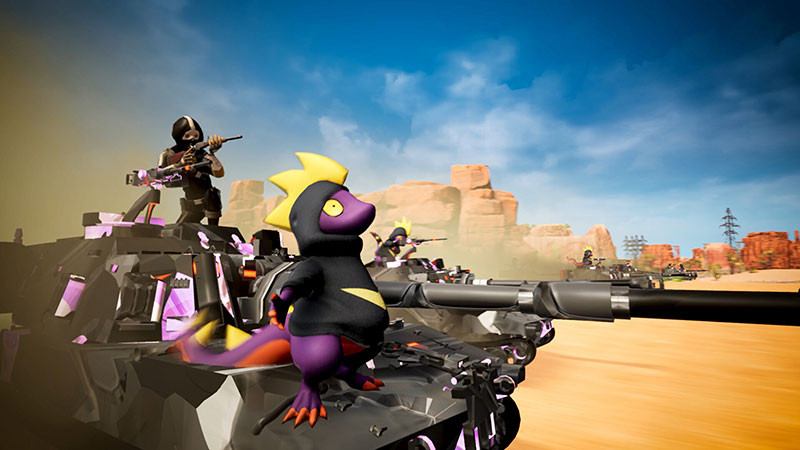
Mizobe tells me Pocketpair develops games in a style that borrows ideas from others the team enjoys playing. Overdungeon takes clear influence from Slay the Spire and Clash Royale, while Craftopia has elements of Zelda, Harvest Moon, and a litany of survival games. Palworld draws from games like Pokémon, Age of Empires, Grand Theft Auto, Elden Ring, Valheim, and Fortnite to create what Mizobe calls a “unique gaming experience that is different from existing games.”
Palworld unfolds on the Palpagos Island in the Pacific Ocean. Strange monsters called Pals, of over 100 varieties, occupy this tropical land undiscovered by humankind for generations. That eventually changed, and now various factions have set up shop in pursuit of their own interests. Players control an explorer who washes ashore on the island following a shipwreck. Thus, survival is your primary goal, and you need the Pals’ help to accomplish this.
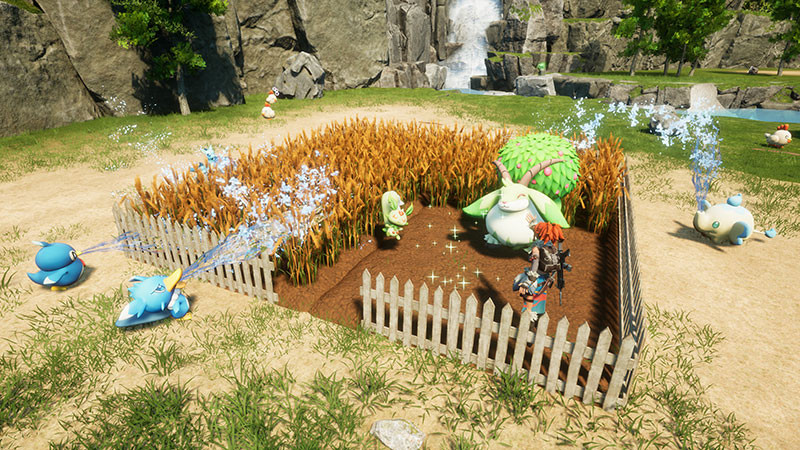
Pals are based on real animals and cultural myths from places like Europe, China, and Egypt. They come in several attributes: Neutral, Flame, Water, Grass, Electric, Frost, Earth, Dark, and Dragon. Resistances and vulnerabilities follow the rock/paper/scissor format of Pokémon: Water is resistant to Flame, for example. However, Pals can learn attacks opposite their types, so you can teach a Flame move to a Water Pal. Players can also breed Pals to create new species. This opens the door to a plethora of possible combinations, and while not all of them result in a completely new creature, others carry the traits of their parents. Mizobe says designing so many uniquely talented Pals, including the long list of breeding offspring, has been the most formidable development challenge.
Pals roam freely, with players catching them by blasting them with weapons, like guns, to weaken them. After that, you toss a blue spherical device to capture targets. Pals can then be used in battle, and the number you can use at a time varies depending on the situation. You can let Pals handle combat by issuing commands or picking them up and using them like living firearms. Pals also come with their own unique partner skills and abilities.
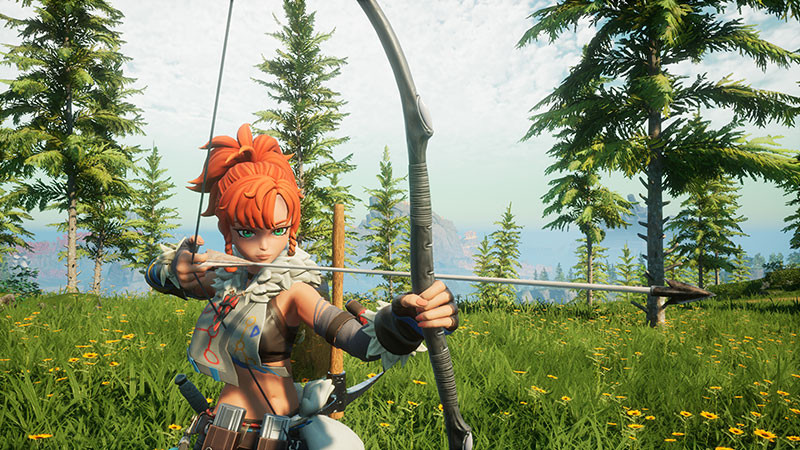
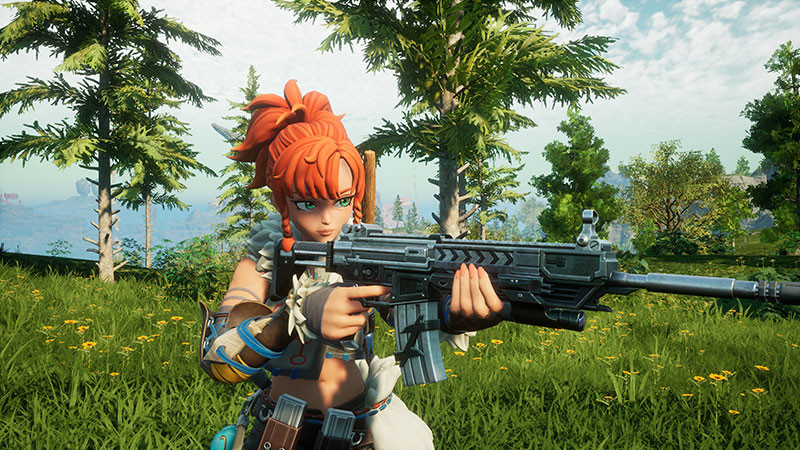
Your non-living arsenal includes clubs, bows, and spears to heavy gun weapons like shotguns, ARs, miniguns, and rocket launchers. As effective as these killing machines can be, some Pals can’t be beaten using conventional weaponry. Pocketpair doesn’t elaborate, only teasing that these sturdier Pals require more clever methods to defeat them.
Outside of battle, you can put Pals to work farming crops to cook beneficial dishes and constructing buildings and factories to create settlements. In fact, some Pals are better specialized for labor than fighting. Trailers have shown assembly lines of cute critters building weapons and looking decidedly unhappy about it. This plays into the game’s dark humor. You’re free to be a jerk by, for example, illegally poaching them in forbidden zones, attracting the attention of a corrupt police force that monitors the island. Mizobe tells me morality doesn’t factor into the storytelling, so if you want a (mostly) consequence-free excuse to be a monster, go right ahead.
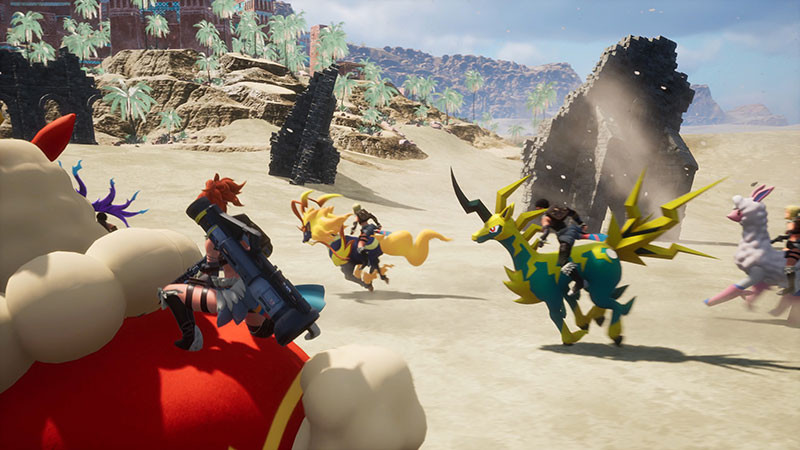
Regarding survival mechanics, Palpagos features a day/night cycle and changing climate, meaning you need to cope with uncomfortably hot or cold temperatures. With all these spinning plates, Pocketpair tells me the general gameplay loop looks like this: You craft vital tools, gather resources, build a base, explore some more, perhaps fight a boss along the way, and repeat. In between that, you catch Pals since they’re necessary for almost every facet of play.
Additionally, multiplayer allows players to explore Palworld together. Up to four friends can play normally, but dedicated servers support over 20. With so much going on, Mizobe tells me feature creep has often reared its ugly head. Thus, cutting ideas to prevent Palworld from becoming bloated and unfocused has been an ongoing challenge. “At the beginning, we thought about having a huge underground world and the ability to live in outer space, but we decided to give up on these for the time being,” says Mizobe.
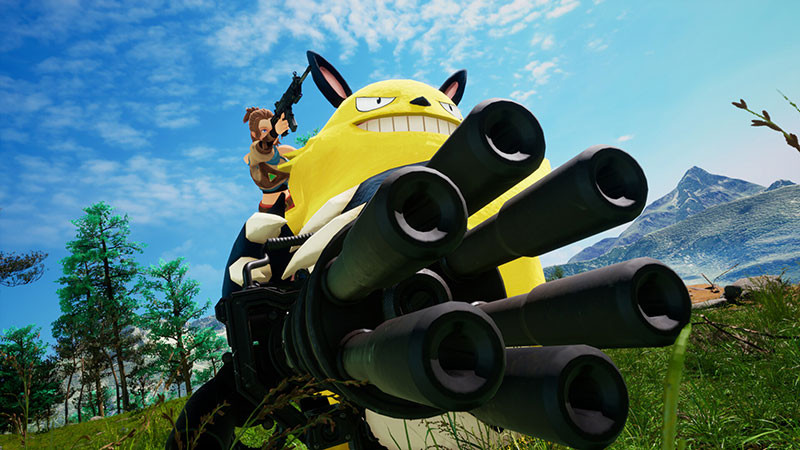
According to Mizobe, Palworld carries lessons learned from the studio’s previous efforts. Mainly, simply mashing together disparate genres isn’t enough and should be done carefully. Pocketpair had trouble defining the rules of Overdungeon because it was so focused on replicating the RTS elements of Clash Royale. Craftopia had so many ideas that some mechanics clashed, which the team is still correcting.
“Palworld is being made with the awareness that ‘we are working through difficult game design problems in order to keep the consistency of each genre,’” Mizobe writes. “We try to not tackle too much at the same time while being focused on meeting the players’ expectations. We’ve made a lot of mistakes along the way, but overall, we think it turned out well in the end.”
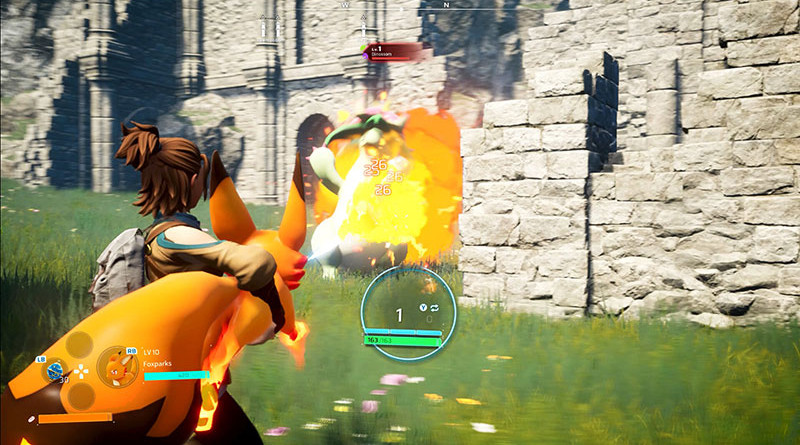
We can only hope that the team continues to zero in on what makes Palworld click, even if they still have some more tough decisions to make in the long road ahead.
“We recently noticed the potential for a PvP mode in this game and are now reconsidering if we should expand on it,” says Mizobe. “That has us facing a difficult challenge again. Game development is always difficult.”
This article originally appeared in Issue 360 of Game Informer.
How Spider-Man 2’s Miles Morales Represents Community, Black Culture, And Me
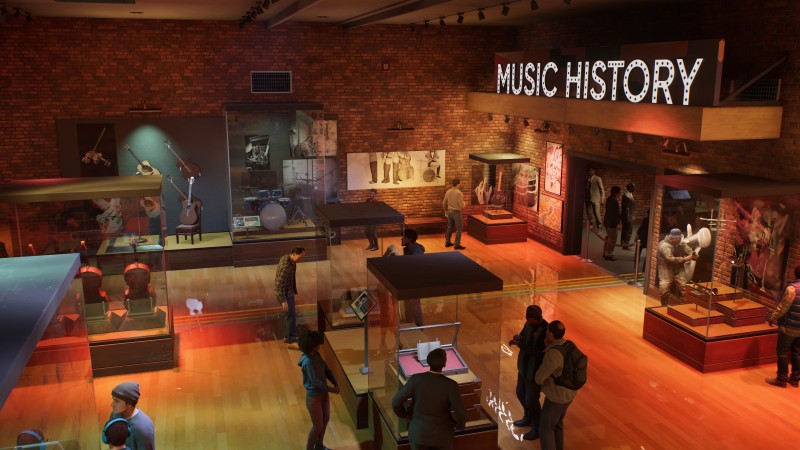
This article contains spoilers for the Harlem Cultural Museum side quest in Marvel’s Spider-Man 2.
Miles Morales is a comic book character created to represent people of color.
Leading up to the 2008 election, which resulted in the United States’ first African American president, Barack Obama, Marvel wanted to “take a good look” at one of their icons to reimagine as African American. A few years later, when an internet campaign pushed Community actor Donald Glover to play Spider-Man, the icon was chosen, and writer Brian Michael Bendis and artist Sara Pichelli created Miles. Every iteration of the character continues this legacy of representation, and Insomniac Games’ Spider-Man 2 is no different. You can read our full review of the game here, but I want to focus on one specific part: a series of jazz-themed side quests.
Up in Harlem, criminal forces are conspiring to halt the opening of the Harlem Cultural Museum. Curator Angela has assembled an amazing collection of jazz memorabilia, but on the day a big donor comes to pledge his funds, the building is raided, and the instruments are stolen. Relative to the game’s main story, which has players battling huge villains and tearing up the city in the process, the stakes of this mission are low – but still high enough to warrant Spider-Man’s help.
[embedded content]
Miles is invested not just because his mom Rio is the one asking him for help but because he cares about his community, and as an aspiring musician himself, he’s curious about the history, too. Throughout each quest, Miles hunts down the instruments, meeting up with people in the neighborhood along the way. When he retrieves Charlie Parker’s saxophone, he gets a lesson about the connections between jazz and hip hop (Miles’ music of choice) from an older Black man, enhancing Miles’ understanding of the importance of his mission. And since his dad was a Parker fan, his personal motivation is boosted, too.
I’m not interested in spoiling the ending of this quest, except to say that, unlike most quests in the Spider-Man games, it’s not done to set up a supervillain cameo. The scale is as small as the first quest implies, and that’s a relief. It feels more personal that way.
The culmination of this questline is what stuck with me in the weeks since playing. At the end of the day, the exhibit is restored, and the whole neighborhood is invited to celebrate the success. All the music history that had been hinted at is put on full display, literally – proper museum exhibits show off Charlie Parker’s saxophone, Clyde Stubblefield’s drum set, and a whole lot more. It’s a quick but proper look into some of the biggest figures of the early 1900s jazz scene, complete with instruments, tap shoes, and poetry. As Miles explores the space, he mutters some Langston Hughes to himself, soaking in the words.
At the same time, the museum is scattered with people you interacted with across your quest to recover the stolen artifacts. Commonly recurring characters like Miles’ best friend Ganke and Rio are here, but you can also speak with people like curator Angela or the man who explained Charlie Parkerʼs saxophone to you. Saving lives is something you do countless times in these games, but uniting a community and preserving its culture is uniquely touching. As Miles takes in the museum celebration, I can’t help but think that this was why his character was created.
I have always related to and felt represented by Miles Morales, but this goes beyond that. It’s one thing to create a Black version of a traditionally white character, giving people the chance to see themselves in a role they typically wouldn’t, but Miles carves a completely separate space for himself. Here, he’s doing more than protecting faceless lives, he’s actively protecting the values I hold as a member of the Black community. The history of Black art is genuinely important, and the museum highlights that in a way that emphasizes communal joy and togetherness, an angle we’re not always afforded. It’s rare that I truly relate to a character on screen and even rarer that I relate to a character in a video game, but Spider-Man 2 manages to go one step past that.
As Miles unites with his friends and family to celebrate Black art, I am not just seen.
I am understood.
20 Best ChatGPT Prompts for Entrepreneurs
In the realm of entrepreneurship, where agility and innovation are paramount, tools like ChatGPT are revolutionizing how entrepreneurs approach challenges and opportunities. ChatGPT is a versatile partner for entrepreneurs seeking to enhance efficiency, creativity, and strategic depth in their ventures. From ideation to customer engagement, ChatGPT’s…
Give Me Experiences, Not Obligations

It is admittedly unfair of me, but any time a video game reveals itself as free-to-play, my interest immediately dissipates. Free-to-play games are not universally bad; plenty of brilliant design ideas, engaging stories, and fun mechanics can be found in games with no upfront admission fee. But once a game’s goal shifts from singular experience to long-term engagement, any excitement I may have folds in on itself and disappears like Pac-Man.
It all stems from my desire for experiences, not obligations.
In free-to-play and comparable models, success is marked by player engagement. The more rounds a player queues into and the longer they play, the more likely they are to engage with the monetized elements. And the best way to encourage that engagement is to incentivize players to return. Daily check-in unlocks and numerical goals related to how often you use certain mechanics – those are obligations without a finish line. I’ve fallen into the trap a few times with mobile games and online shooters, but I no longer have the patience to engage.
Video games are a medium of artistic expression. My favorites have something insightful to say with their story, force you to reconsider basic mechanics in new ways, make me laugh, and have proper conclusions. I don’t want to be distracted with goals outside the canon of the world I’m trying to lose myself in.
The illusion is shattered when I’m presented with paid skins or will receive seven additional bloop coins for signing in 10 days in a row. I am no longer fooling my brain into thinking it exists in an alternate reality where throwing bipedal plants at a monster means I can get on my spaceship to go home. Now I’m engaging with a piece of commerce. Like using a touchscreen to order fast food items, but instead of pressing my finger against a pane of unsanitary glass to receive a milkshake, I’m controlling an avatar with a pink scarf shooting at other players to get a new colored smoke trail for my parachute.
I don’t fault developers for chasing this model; it can be extremely profitable when successful and ensure the long-term health of a business and its employees. I also understand the appeal of free-to-play games. It’s an avenue toward a social community, and nothing encourages friends to check out a multiplayer game more than the promise that you won’t have to pay a dime to at least try it out.
For me, however, I don’t want required reading. I don’t want to feel like I’m missing out on temporary events and licensed character skins just because I played a different video game. I don’t want to commit to anything that demands I set a calendar reminder to play. It’s the way television used to work, and there’s a reason it’s nearly extinct. In the time I have set aside for entertainment and video games, I want experiences from creators with specific ideas that conclude. I’m more than happy to pay for those – even at a high price point – exactly once. The only obligation I want is the recurring memory of how much I enjoyed that experience.
This article originally appeared in Issue 358 of Game Informer.
